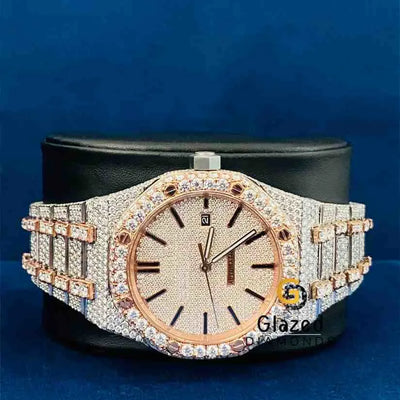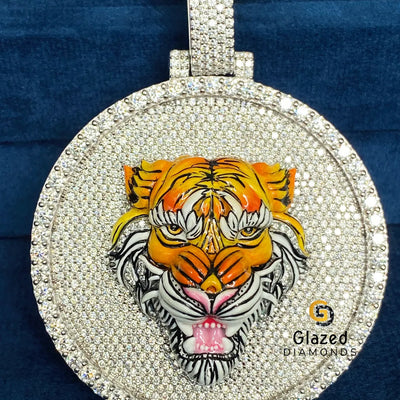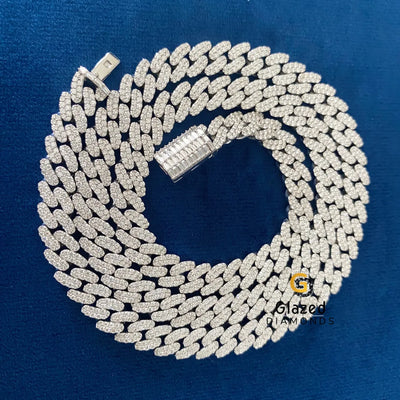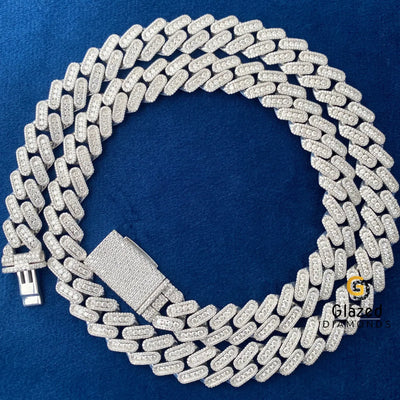We love a good origin story, and moissanite has one that reads like sci-fi. The journey starts in space, takes a sharp turn in a desert, and ends up in modern jewelry. In this guide, we walk you through moissanite history in clear steps, so you see why this gem earned a real place in fine pieces.
A Space Spark: Meteorites and Silicon Carbide
The story starts with tiny crystals inside a meteorite. Those crystals matched silicon carbide. Natural moissanite is rare in nature, so early samples linked to cosmic dust and impact sites. That is why people still say the tale begins in the stars.
>1893: Henri Moissan Puts a Name to the Crystal

In 1893, French chemist Henri Moissan studied microscopic crystals taken near a crater in Arizona. He first thought they were diamonds, then saw different behavior under tests. The mineral earned his name later on. That moment set the base for the history of moissanite in labs and in jewelry.
>Early 1900s to Mid-Century: Science Learns the Material
Across the early decades of the history of moissanite, researchers worked on silicon carbide for high-heat uses and abrasives. The crystal handled heat and pressure with ease. That toughness later helped cutters design shapes that keep edges crisp and facets bright.
>Late 1990s: Gem-Quality Growth Reaches Jewelers
The late 1990s marked the key shift. Lab growth improved and clearer crystals reached sizes fit for rings and earrings. Companies started offering calibrated stones and consistent grading. That is when moissanite entered main street cases in a serious way.
>Cut, Color, Clarity: How Labs Solved the Big Three
Early stones had slight tints. Step by step, growth recipes and post-growth treatments improved color. Today you see near-colorless options and also warm tones by choice. Clarity moved ahead, too. Inclusions dropped as control over growth got tighter. Cut quality followed. With a high refractive index and strong fire, cutters lean on facet maps that show light play even in soft rooms.
>Why Moissanite Wins Daily Wear
Hardness sits near sapphire on the Mohs scale. That gives solid scratch resistance in routine life. Toughness helps with prong work and micro pave designs. Weight is lower than diamond at the same size, so larger looks feel comfy on long days. For many buyers, those traits matter more than old rules tied to tradition.
>Ethics and Cost: The Modern Upside
Lab origin keeps sourcing simple and transparent. You avoid complex supply chains. Prices sit in a friendly band, so you can size up the center or add accents without stress. For us, that balance of beauty and clarity in sourcing is the quiet win in moissanite history.
>A Quick Timeline You Can Trust

-
1893: Moissan studies crystals near a crater and identifies a new mineral.
-
Early 1900s: Industry adopts silicon carbide for heat-heavy tasks.
-
Late 20th century: Lab growth yields clearer, larger crystals.
-
Late 1990s: Jewelers adopt gem-grade moissanite for rings and earrings.
-
2000s onward: Color control and cut maps improve. Bridal sets and fashion lines expand.
Moissanite Versus Diamond: What Shoppers Actually Notice

People notice light, size, and setting. Moissanite shows strong fire in point lights and polished rooms. Size per budget is friendly, so you can choose a stone that fits your frame and still keep the design sleek. If a buyer values a classic look with clear sparkle, moissanite delivers. If a buyer wants historic rarity as a core value, diamond still speaks to that. We see joy in both paths. We just prefer when the choice suits real life.
>How We Set Moissanite So it Stays Brilliant
We build around the stone’s strengths. Prongs stay low and neat to avoid snagging. Pavé lines sit tight to keep flash without bulk. For larger centers, we balance head height with band width, so the ring sits steady. These small calls protect facets and keep polish alive after many events.
>Care That Keeps the Fire
Warm water and mild soap clean oils that mute sparkle. A soft brush helps under the pavilion and around prongs. An ultrasonic unit works when the setting allows it. Regular checks for loose prongs keep edges safe. That is all most owners need.
>Common Myths We Still Hear

-
“It looks too bright.” Under candlelight or LEDs you may see lively fire. Good cuts manage that so the look stays elegant.
-
“It clouds fast.” Residue builds on any gem. Simple cleaning brings the shine back.
-
“It chips easily.” The crystal is tough. Normal wear is fine with a sensible setting.
Where Moissanite Goes Next
We see two strong moves. First, better fancy shapes with crisp symmetry. Second, more design that pairs moissanite with colored gems for contrast. Both trends fit the material well. They also fit how buyers want their pieces to match their style.
>Why This Story Matters to Us
We design for real days and real nights. Moissanite gives us range without stress on clarity in sourcing or budget. That is why we keep studying cut maps, polish times, and setting angles that suit this material. The more we refine, the better it looks on your hand.
>The Takeaway
Moissanite history carries a rare mix of science and style. A spark in a crater led to a gem that fits modern life. At Glazed Diamonds, that path shows up in clean settings, calm polish, and cuts that bring light to your hand with ease. If the goal is beauty with clarity in sourcing and price, moissanite makes a strong case.
>










